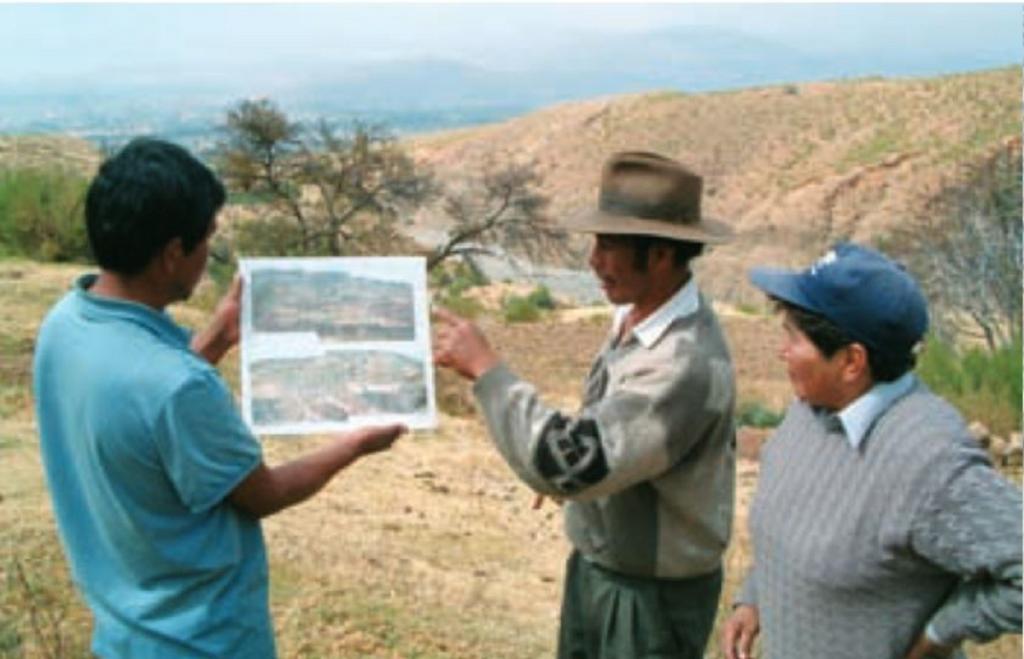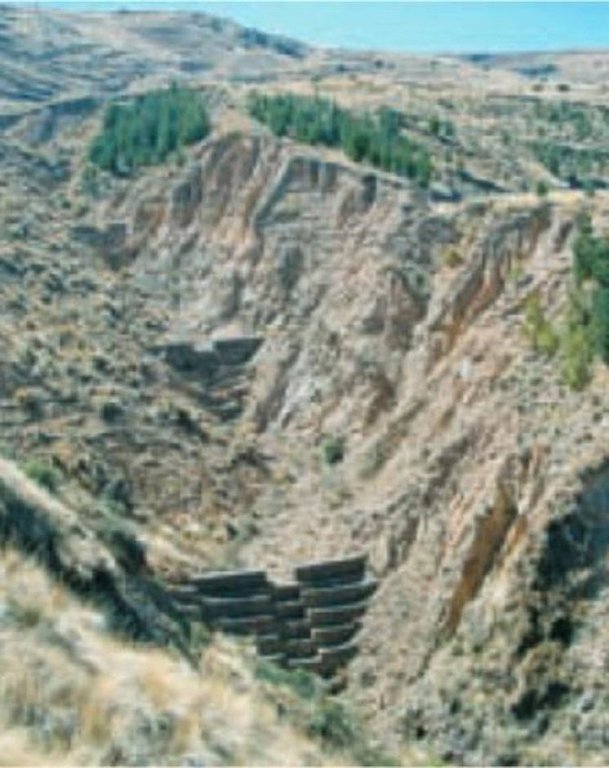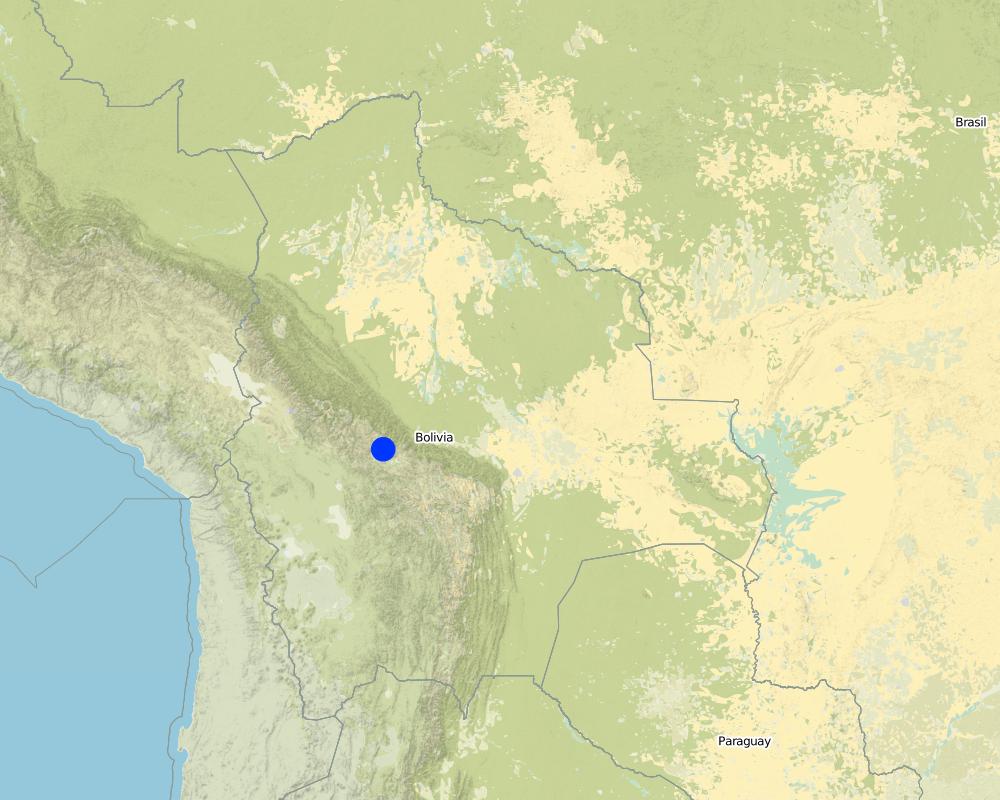Incentive-based catchment treatment [Bolivia, Plurinational State of]
- Creation:
- Update:
- Compiler: Unknown User
- Editor: –
- Reviewers: David Streiff, Deborah Niggli
approaches_2404 - Bolivia, Plurinational State of
View sections
Expand all Collapse all1. General information
1.2 Contact details of resource persons and institutions involved in the assessment and documentation of the Approach
SLM specialist:
Name of project which facilitated the documentation/ evaluation of the Approach (if relevant)
Book project: where the land is greener - Case Studies and Analysis of Soil and Water Conservation Initiatives Worldwide (where the land is greener)Name of the institution(s) which facilitated the documentation/ evaluation of the Approach (if relevant)
GEOTEST AG (GEOTEST AG) - Switzerland1.3 Conditions regarding the use of data documented through WOCAT
The compiler and key resource person(s) accept the conditions regarding the use of data documented through WOCAT:
Yes
1.4 Reference(s) to Questionnaire(s) on SLM Technologies

Diques de piedras [Bolivia, Plurinational State of]
Se trata de diques de piedras que se ubican en el lecho de los arroyos, acompañados por plantaciones alrededor de las construcciones.
- Compiler: Unknown User

Zanjas de Coronación [Bolivia, Plurinational State of]
Las zanjas de coronación impiden la entrada del escurrimiento superficial a las cárcavas
- Compiler: Unknown User
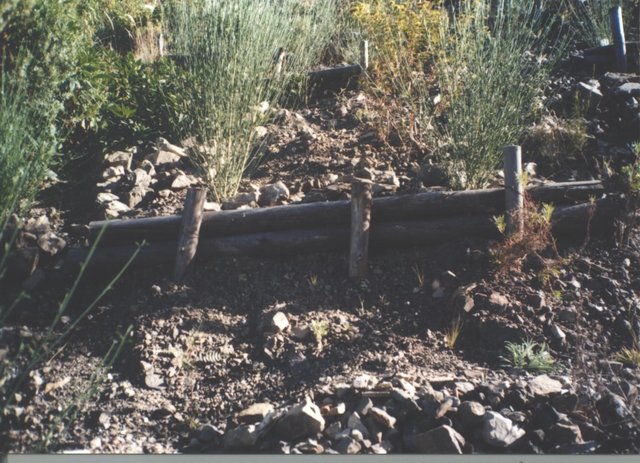
Estabilización de taludes (biotrampas) [Bolivia, Plurinational State of]
La tecnología consiste en la práctica de reforestación en combinación con el establecimiento de trampas de sedimentos (biotrampas) para consolidar los taludes.
- Compiler: Georg Heim
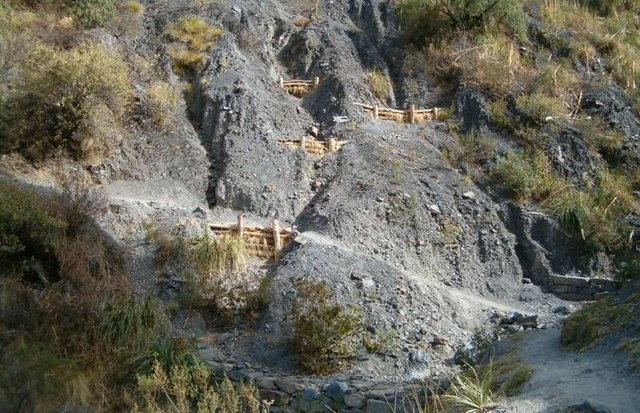
Gully control and catchment protection [Bolivia, Plurinational State of]
Integrated gully treatment consisting of several simple practices including stone and wooden check dams, cut-off drains and reforestation in sediment traps (biotrampas).
- Compiler: Georg Heim
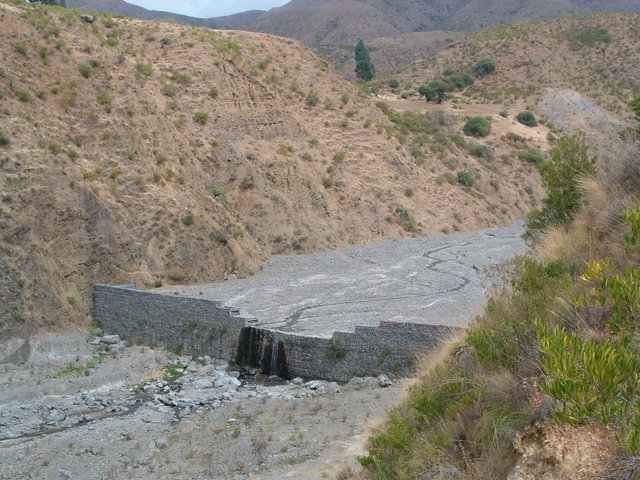
Obras Hidráulicas - Gaviones de Piedras [Bolivia, Plurinational State of]
Mampostería gavionada (= gaviones puestos en el cauce). Se trata de paquetes de piedras encajadas en malla de alambre que forman una represa de sedimentos.
- Compiler: Georg Heim

Diques de madera (tipo Krainer) [Bolivia, Plurinational State of]
Se trata de diques de madera que se ubican en el lecho de los arroyos, acompañados por plantaciones alrededor de las construcciones.
- Compiler: Georg Heim
2. Description of the SLM Approach
2.1 Short description of the Approach
A project supported, incentive-based approach: farmers are sensitised about erosion, and involved in gully control and other measures to protect catchments.
2.2 Detailed description of the Approach
Detailed description of the Approach:
Aims / objectives: The objective of the locally-based organisation Programa de Manejo Integral de Cuencas (PROMIC) is to involve land users in the control of soil erosion in the catchments above Cochabamba city. While erosion here is largely a natural process, it is aggravated by inappropriate agricultural practices. PROMIC receives funds from national and international governments, and works in an interactive manner. Together with local farmers, erosion processes in the context of the human environment were analysed to identify the needs of the agriculture population - and to plan a conservation and development programme. The aim was to convince farmers of the necessity to protect their agricultural land and stabilise the gullies below, and of the overall importance of implementing technologies to combat erosion.
Role of stakeholders: The farmers were involved in the process through regular community meetings organised by PROMIC, in which they could adjust PROMIC's catchment intervention plans to their own requirements through an interactive process. PROMIC considered that the sensitisation work and the interactive process were essential to ensure long-term sustainable land use. In the short term, however, it will be mainly the city downstream - Cochabamba - that benefits from the implementation of the erosion control technologies. For that reason, the farmers were paid to carry out construction of the measures (through 'cash-for-work'). The farmers should, however, profit from the technologies in the long term. They were taught how to build and maintain check dams, cut-off drains and biotrampas. The implementation in the watershed started in 1996 and took six years: when the implementation phase was over, farmers no longer received financial subsidies. The long period of sensitisation should help to ensure that farmers incorporate erosion prevention technologies into their cropland above the gullies. PROMIC still monitors the state of the structures from time to time, but most of the maintenance is left to the farmers themselves. PROMIC continues, however, to provide technical support and some transport of materials. Both internal and external evaluation followed the end of the implementation phase.
2.3 Photos of the Approach
2.5 Country/ region/ locations where the Approach has been applied
Country:
Bolivia, Plurinational State of
Region/ State/ Province:
Cochabamba district
Map
×2.6 Dates of initiation and termination of the Approach
Indicate year of initiation:
1996
2.7 Type of Approach
- project/ programme based
2.8 Main aims/ objectives of the Approach
- teach farmers about sustainable land use, - build up skills amongst farmers to enable them to treat gullies without outside help, - reduce flooding and sedimentation in the valley of Cochabamba and general soil loss in the area through collaboration with farmers in the watershed, - improve traditional agriculture with a package of conservation-related practices, - indirectly support farmers by cash-for-work incentives which enables them to implement SWC technologies on their own fields
The SLM Approach addressed the following problems: - lack of knowledge about damage caused by erosion and benefits of various possible conservation technologies, - lack of financial resources: shortage of funds prevents farmers investing in technologies, even if these bring benefits to them (as well as to the downstream population), - persistence of detrimental traditional agricultural practices, leading to accelerated degradation
2.9 Conditions enabling or hindering implementation of the Technology/ Technologies applied under the Approach
availability/ access to financial resources and services
- hindering
Few direct short-term profits from SWC technologies in gullies for the farmers in the watershed (the main beneficiary is the city of Cochabamba downstream).
Treatment through the SLM Approach: Search for national and international subsidies to help the farmers to implement the technologies during the initial period.
institutional setting
- hindering
The local farmers' association is insufficiently organised to ensure the independent continuation of activities post-project.
Treatment through the SLM Approach: Local farmers' association should be included in the sensitisation and implementation process.
other
- hindering
Climate: Climatic extremes such as strong winds and excess or deficit of rain.
Treatment through the SLM Approach: Plant trees at close spacing, and plant trees/ shrubs that can tolerate climatic extremes.
3. Participation and roles of stakeholders involved
3.1 Stakeholders involved in the Approach and their roles
- local land users/ local communities
There were no women working in the gully rehabilitation. The reason is a cultural taboo against women working with heavy materials; women are responsible for looking after cattle, and for the household.
- community-based organizations
Local farmers association
- Specialised engineers of PROMIC
3.2 Involvement of local land users/ local communities in the different phases of the Approach
| Involvement of local land users/ local communities | Specify who was involved and describe activities | |
|---|---|---|
| initiation/ motivation | passive | interviews/questionnaires, information during regular meetings, entrevistas / cuestionarios |
| planning | interactive | results of the socio-economic diagnosis defined the planning; farmers were involved through regular meetings: interactive planning at individual and community level |
| implementation | external support | None |
| monitoring/ evaluation | passive | interviews/questionnaires; internal and external evaluations where farmers were interviewed |
| Research | passive | socio-economic diagnosis; collection and analysis of bio-physical baseline data |
3.3 Flow chart (if available)
Description:
General assembly: National and international public and private institutions, members, foundation
Directory: Prefecture, general agent, Swiss Agency for Development and Cooperation (SDC), Belgian Technical Cooperation (BTC), private enterpreneurs
Consulting council: Municipalities, projects, universities
Advisors: General agent, marketing, SSU1, SSU2 (see below), administration
SSU: Strategic service unit
Services: Executive body for technology extension and implementation: PROMIC field technicians
3.4 Decision-making on the selection of SLM Technology/ Technologies
Were decisions on the selection of the Technology(ies) made:
- Made by specialised engineers of PROMIC
Explain:
farmers were involved by modifying initially proposed technologies.
Decisions on the method of implementing the SLM Technology were made by Made by specialised engineers of PROMIC
4. Technical support, capacity building, and knowledge management
4.1 Capacity building/ training
Was training provided to land users/ other stakeholders?
Yes
Form of training:
- on-the-job
Subjects covered:
The approach included training on technical aspects and on long-term planning for sustainable land use. Some farmers were trained to become foremen - who in turn instructed other farmers. During the construction period PROMIC project staff trained farmers on the job in soil conservation practices.
4.2 Advisory service
Do land users have access to an advisory service?
Yes
Specify whether advisory service is provided:
- on land users' fields
Describe/ comments:
Name of method used for advisory service: participatory planning of gully treatment; Key elements: making farmers aware of the environmental and economic necessity for the technology, interactive planning of technology implementation at individual and community levels
4.3 Institution strengthening (organizational development)
Have institutions been established or strengthened through the Approach?
- yes, moderately
Specify the level(s) at which institutions have been strengthened or established:
- local
Specify type of support:
- capacity building/ training
4.4 Monitoring and evaluation
Is monitoring and evaluation part of the Approach?
Yes
Comments:
There were few changes in the Approach as a result of monitoring and evaluation: The approach was to initially target groups. Later, individuals were included (with individual farmer-family visits) to improve the effectiveness of the awareness raising and the implementation.
4.5 Research
Was research part of the Approach?
Yes
Specify topics:
- sociology
- ecology
- technology
- S
Give further details and indicate who did the research:
Research was done on 1)SWC (testing different measures), 2)various soil parameters, and 3) a socio-economic survey. Research was an important part, not only for planning (based on biophysical and socio-economic data), but also to stay in contact with the rural population and to obtain their confidence. Thanks to the research, the technology is well adapted to the biophysical conditions.
5. Financing and external material support
5.1 Annual budget for the SLM component of the Approach
Comments (e.g. main sources of funding/ major donors):
Approach costs were met by the following donors: government (national): 20.0%; international non-government: 80.0%
5.2 Financial/ material support provided to land users
Did land users receive financial/ material support for implementing the Technology/ Technologies?
Yes
5.3 Subsidies for specific inputs (including labour)
- labour
| To which extent | Specify subsidies |
|---|---|
| fully financed | labour for the rehabilitation of the gully area |
- equipment
| Specify which inputs were subsidised | To which extent | Specify subsidies |
|---|---|---|
| machinery | fully financed | |
| tools | fully financed | |
- agricultural
| Specify which inputs were subsidised | To which extent | Specify subsidies |
|---|---|---|
| seedlings | fully financed | |
- infrastructure
| Specify which inputs were subsidised | To which extent | Specify subsidies |
|---|---|---|
| roads | fully financed | community infrastructure |
| technical support | fully financed | |
- other
| Other (specify) | To which extent | Specify subsidies |
|---|---|---|
| transport for further technology implementation | fully financed |
If labour by land users was a substantial input, was it:
- paid in cash
Comments:
100% of the implementation was subsidised. Farmers were contracted to build the structures
5.4 Credit
Was credit provided under the Approach for SLM activities?
No
6. Impact analysis and concluding statements
6.1 Impacts of the Approach
Did the Approach help land users to implement and maintain SLM Technologies?
- No
- Yes, little
- Yes, moderately
- Yes, greatly
The approach resulted in a considerable improvement in SWC. However, despite new knowledge about erosion, the farmers themselves hardly carry out any new gully conservation work without payment, and in the long term maintenance is not ensured.
Did other land users / projects adopt the Approach?
- No
- Yes, little
- Yes, moderately
- Yes, greatly
Some other projects in Bolivia have copied parts of PROMIC's approach.
6.3 Sustainability of Approach activities
Can the land users sustain what has been implemented through the Approach (without external support)?
- uncertain
6.4 Strengths/ advantages of the Approach
| Strengths/ advantages/ opportunities in the compiler’s or other key resource person’s view |
|---|
| Good technical support during and after conclusion of the implementation phase (How to sustain/ enhance this strength: Technical support not enough on its own - needs to be complemented by further sensitisation.) |
| Sensitisation of the farmers to erosion and degradation processes, and awareness creation about the impact and necessity of SWC in the hills to protect the valleys (How to sustain/ enhance this strength: Continued sensitisation work after the implementation phase.) |
| Transparent process during research, planning and implementation phases; incorporation of farmers' ideas (thus: good acceptance of PROMIC by the rural population). |
| Integration of farmers in the process of implementation of soil conservation. (How to sustain/ enhance this strength: Farmers need to be even more integrated in the process of monitoring to guarantee the maintenance of the soil conservation achieved.) |
6.5 Weaknesses/ disadvantages of the Approach and ways of overcoming them
| Weaknesses/ disadvantages/ risks in the compiler’s or other key resource person’s view | How can they be overcome? |
|---|---|
| Farmers implementing SWC are not those benefiting most from the impact in the short term; even though the city of Cochabamba benefits considerably, financial support for implementation has stopped | Seek financial support from Cochabamba; implement a system of payment for environmental services |
| Lack of money for replication and long-term maintenance of SWC measures | Guarantee financial support in the threatened area, by the local government and international organisations. |
| Sensitisation phase (for farmers and government) was too short to ensure sustained application of the technology without external support and supply. Established structures are often neglected and thus deteriorate | Find new donors to continue the training/awareness raising on SWC technologies. Include the farmers in the monitoring visits and demonstrate examples of successful SWC (positive stimuli). |
7. References and links
7.1 Methods/ sources of information
- field visits, field surveys
- interviews with land users
7.2 References to available publications
Title, author, year, ISBN:
PROMIC documentation
Available from where? Costs?
Mooseggstrasse 9, 3550 Langnau, Switzerland; geoheim@bluewin.ch
Links and modules
Expand all Collapse allLinks

Diques de piedras [Bolivia, Plurinational State of]
Se trata de diques de piedras que se ubican en el lecho de los arroyos, acompañados por plantaciones alrededor de las construcciones.
- Compiler: Unknown User

Zanjas de Coronación [Bolivia, Plurinational State of]
Las zanjas de coronación impiden la entrada del escurrimiento superficial a las cárcavas
- Compiler: Unknown User

Estabilización de taludes (biotrampas) [Bolivia, Plurinational State of]
La tecnología consiste en la práctica de reforestación en combinación con el establecimiento de trampas de sedimentos (biotrampas) para consolidar los taludes.
- Compiler: Georg Heim

Gully control and catchment protection [Bolivia, Plurinational State of]
Integrated gully treatment consisting of several simple practices including stone and wooden check dams, cut-off drains and reforestation in sediment traps (biotrampas).
- Compiler: Georg Heim

Obras Hidráulicas - Gaviones de Piedras [Bolivia, Plurinational State of]
Mampostería gavionada (= gaviones puestos en el cauce). Se trata de paquetes de piedras encajadas en malla de alambre que forman una represa de sedimentos.
- Compiler: Georg Heim

Diques de madera (tipo Krainer) [Bolivia, Plurinational State of]
Se trata de diques de madera que se ubican en el lecho de los arroyos, acompañados por plantaciones alrededor de las construcciones.
- Compiler: Georg Heim
Modules
No modules


